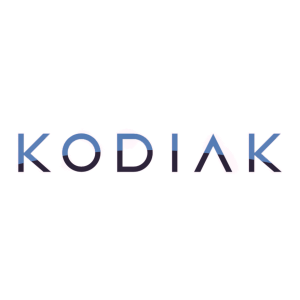Kodiak Sciences Announces Recent Business Highlights and Third Quarter 2024 Financial Results
Rhea-AI Summary
Kodiak Sciences reported Q3 2024 financial results and business updates. The company hosted an Investor R&D Day, presenting new clinical data showing tarcocimab's ocular half-life of 20 days, 3 times longer than competitors. They continued enrollment in three clinical programs: Phase 3 GLOW2 study in diabetic retinopathy, DAYBREAK study in wet AMD, and APEX study for KSI-101. Financial results showed a net loss of $43.9 million ($0.84 per share), with cash position of $197.9 million expected to support operations into 2026. R&D expenses were $31.9 million, down from $36.2 million in Q3 2023.
Positive
- Cash position of $197.9 million sufficient to fund operations into 2026
- Tarcocimab achieved 3x longer ocular half-life compared to competitors
- R&D expenses decreased to $31.9M from $36.2M year-over-year
- G&A expenses reduced to $14.8M from $18.3M year-over-year
Negative
- Net loss of $43.9 million in Q3 2024
- Stock-based compensation expenses increased to $14.8M from $13.9M year-over-year
News Market Reaction 1 Alert
On the day this news was published, KOD gained 4.34%, reflecting a moderate positive market reaction.
Data tracked by StockTitan Argus on the day of publication.
"In the third quarter we hosted an Investor R&D Day in
"Key analysts, investors and retina specialists were in attendance," continued Dr. Perlroth. "Together, we did a deep dive into Kodiak's R&D and corporate activities. We presented new clinical data supporting our science of durability, with tarcocimab achieving an ocular half-life in patients of 20 days which is 3-times longer than faricimab and 2- to 3- times longer than aflibercept. We also presented the rationale behind the enhanced formulations of our ABC medicines, tarcocimab and KSI-501, which are designed to deliver strong immediacy and Kodiak's signature 6-month durability. We announced the new phase 3 GLOW2 study is enrolling patients in diabetic retinopathy and is designed to repeat the successful GLOW1 study with all patients on 6-month dosing. We announced the new phase 3 DAYBREAK study is enrolling patients in wet AMD and investigating the two key unmet needs of longer durability with tarcocimab and better efficacy with KSI-501. Finally, we announced the new unconjugated bispecific antibody KSI-101 clinical program is enrolling patients with macular edema secondary to inflammation in our APEX study."
"We also put our three clinical programs into their commercial context," continued Dr. Perlroth. "In the large retinal vascular diseases anti-VEGF market, the opportunity is still open for a therapy with both high efficacy and high durability. With tarcocimab and KSI-501, we have the science of immediacy/efficacy based on their enhanced formulations and the science of durability based on their ABC platform designs."
"In the KSI-101 macular edema inflammation market, we note that intraocular inflammation is the fourth leading cause of vision loss in the developed world. One-third of patients with intraocular inflammation develop macular edema, which is the leading cause of vision loss among patients with intraocular inflammation. In
"To that end, in our new APEX cohorts, we are already seeing meaningful clinical responses in sick patients with macular edema secondary to inflammation," said Dr. Pablo Velazquez-Martin, Chief Medical Officer of Kodiak Sciences. "These emerging data, although early, are consistent with the design and profile of our new KSI-101 investigational therapy with its bispecific anti-inflammatory mechanism of action and local intravitreal administration. We look forward to continuing to dose additional patients and to presenting emerging APEX data in MESI patients in the first and second quarters of 2025."
"In the third quarter, we continued the enrollment of subjects across all three of our clinical programs. It is our objective to complete enrollment for the Phase 3 GLOW2 and DAYBREAK studies of tarcocimab and KSI-501 in the first half of 2025, so we and all Kodiak stakeholders can have a clear line of sight to our 48-week topline data readouts. If GLOW2 and DAYBREAK are successful, we plan to file a single Biologics License Application ("BLA") for three diseases (wet age-related macular degeneration, retinal vein occlusion and diabetic retinopathy) with data from five successful Phase 3 studies with tarcocimab."
"For KSI-101, in the second quarter of 2025, we hope to be in a position to select the two dose levels to progress into the pivotal program and to activate the twin PEAK and PINNACLE pivotal studies. It is a time of strong execution, and we are pleased with the growing enthusiasm and momentum from patients, retina specialists and clinical practices who are key partners in our mission to prevent and treat the leading causes of vision loss," concluded Dr. Velazquez-Martin.
Recent Business Highlights
- Investor R&D Day: We hosted an Investor R&D Day with financial analysts and institutional investors on September 23, 2024, in
New York City , with a webcast available for virtual attendees. The event featured presentations and roundtable discussions on Kodiak's science of durability, including (i) first-time presentation of human ocular half-life data of tarcocimab, (ii) science of the enhanced formulation for the Antibody Biopolymer Conjugate ("ABC") Platform, including how the enhanced formulations of tarcocimab and KSI-501 are designed to provide strong immediacy while preserving their signature 6-month durability profile, (iii) updates on our clinical programs including rationale on how our pivotal Phase 3 studies GLOW2 and DAYBREAK are designed to maximize probability of success, and (iv) new progress on our preclinical pipeline including new glaucoma and geographic atrophy programs built from our Antibody Biopolymer Conjugate Drug ("ABCD") Platform.
Leading retina specialist key opinion leaders Dr. David Brown and Dr. Charles Wykoff joined us at the event as guest speakers and shared their perspectives. The event was well-attended by financial analysts and invited institutional investors. - Tarcocimab Clinical Program: In the third quarter of 2024 we continued enrollment for the ongoing Phase 3 GLOW2 study of tarcocimab in diabetic retinopathy ("DR").
GLOW2 is a prospective, randomized, double-masked, multi-center pivotal superiority study designed to evaluate the efficacy and safety of tarcocimab tedromer in treatment-naïve patients with DR. Patients are randomized 1:1 to receive either sham injections or tarcocimab via intravitreal injection at baseline, Week 4, Week 8, Week 20 and Week 44. The primary endpoint is the proportion of eyes improving ≥2 steps on Diabetic Retinopathy Severity Scale ("DRSS") from baseline at Week 48. Additional outcome measures include the proportion of eyes developing a sight threatening complication of diabetic retinopathy and the proportion of eyes improving ≥3 steps on DRSS from baseline at Week 48.
GLOW2 is the second Phase 3 study of tarcocimab in DR in which all patients randomized to investigational therapy will receive tarcocimab on extended, 6-month dosing. The GLOW2 study design mirrors that of the successful GLOW1 Phase 3 study with the benefit of an additional, third monthly loading dose (baseline, Week 4, Week 8). If successful, GLOW2 could serve as one of the two successful pivotal studies in one foundational indication, diabetic retinopathy, to support the marketing authorization application for tarcocimab.
In the third quarter of 2024, we continued site activations and patient enrollment for the Phase 3 DAYBREAK study in wet age-related macular degeneration ("AMD"). The DAYBREAK study includes tarcocimab in a second investigational arm against active comparator aflibercept and incorporates learnings from prior pivotal trials of tarcocimab to maximize the probability of meeting the primary endpoint of non-inferiority in visual acuity gains. Patients randomized to tarcocimab will receive individualized dosing every 4 to 24 weeks on an as needed basis following four monthly loading doses. Patients randomized to aflibercept will be dosed per its label. The individualized dosing of tarcocimab is determined by a treat-to-dryness proactive approach using presence of retinal fluid as a disease activity marker which (i) is the way retina specialists actually treat patients in the real world, (ii) results in a treatment every time it is needed, (iii) prevents undertreatment, and (iv) enhances the probability of meeting the primary endpoint. The objectives for tarcocimab in DAYBREAK are to assess its 6-month durability potential, strengthen its competitive position in wet AMD, and bolster the regulatory application package for the program.
Both GLOW2 and DAYBREAK use tarcocimab's enhanced 50 mg/mL formulation containing both conjugated and unconjugated antibody that is intended to balance immediacy and durability. - KSI-501 Clinical Program: The objective for KSI-501 in DAYBREAK is to explore the efficacy potential of bispecific VEGF and IL-6 inhibition in a broad treatment-naïve wet AMD population. In preclinical models, KSI-501 was shown to be a potent inhibitor of VEGF and IL-6 and, further, was shown to normalize the blood retinal barrier opening the possibility that KSI-501 may be a disease-modifying therapy for retinal vascular diseases.
In the third quarter of 2024, we continued site activations and patient enrollment for the Phase 3 DAYBREAK study in wet AMD. DAYBREAK is a non-inferiority study including parallel investigational arms of KSI-501 and tarcocimab against active comparator aflibercept. Patients randomized to KSI-501 will receive fixed every 8-week dosing with additional individualized dosing (up to monthly dosing) on an as needed basis after four monthly loading doses. Patients randomized to aflibercept will be dosed per its label. Using the same treat-to-dryness approach as tarcocimab, coupled with fixed intensive proactive dosing, maximizes both the probability of meeting the primary endpoint as well as the probability of demonstrating additional efficacy benefits.
DAYBREAK uses KSI-501's enhanced 50 mg/mL formulation containing both conjugated and unconjugated antibody that is intended to balance immediacy and durability. - KSI-101 Clinical Program: We continued site activation and patient enrollment in the third quarter of 2024 for the Phase 1b APEX study of KSI-101. KSI-101 is a novel, potent and high-strength (100 mg/mL) bispecific protein targeting IL-6 and VEGF, which is a "traditional" (unconjugated) intravitreal biologic. The APEX study evaluates KSI-101 in two cohorts, Cohort 1 in patients with diabetic macular edema ("DME") and Cohort 2 in patients with macular edema secondary to inflammation ("MESI"). The goal of the APEX study is to evaluate the safety and tolerability of KSI-101 and to identify two dose levels to progress into dual Phase 2b/3 studies (PEAK and PINNACLE) in MESI.
- ABCD Platform™: We are expanding our research pipeline of duets and triplets built from our modular ABCD Platform that embeds diverse active pharmaceutical ingredients ("API") including small molecules, proteins, peptides, macrocycles, and oligonucleotides in the biopolymer backbone to enable high drug antibody ratio ("DAR") medicines with targeted, multi-specific, tailored modulation of biological pathways for ophthalmic and systemic diseases. We recently shared at the Investor R&D Day that we are advancing two preclinical programs built on the ABCD Platform.
One program is for the treatment of glaucoma, embedding in the biopolymer backbone (i) an NLRP3 small molecule inhibitor, and (ii) a second small molecule that lowers intraocular pressure ("IOP"). The NLRP3 inflammasome is an intracellular complex that drives inflammation and cell death and is known to play a key role in glaucoma progression. The goal of this program is to create an intravitreally injected therapy that delivers two mechanisms of action ("MOA") in a sustained release fashion, to fulfill the unmet needs in the glaucoma field for non-topical, long-durability therapy that delivers MOAs beyond IOP lowering.
The second program is for the treatment of dry AMD. Currently there are no approved therapies for early or intermediate-stage dry AMD. There are two approved therapies, both complement inhibitors, for geographic atrophy ("GA"), the advanced stage of dry AMD. These therapies require monthly or every other month intravitreal injections and neither sufficiently halts disease progression. This program at Kodiak explores the potential of embedding in the biopolymer backbone (i) a macrocyclic peptide inhibitor of the complement pathway, and (ii) an NLRP3 small molecule inhibitor. The NLRP3 inflammasome is known to play a key role in AMD disease etiology. The objective of this program is to create an intravitreally injected ABCD platform-enabled therapy with a dual mechanism of action to achieve better efficacy and extended durability as compared to currently approved therapies for GA.
Third Quarter 2024 Financial Results
Cash Position
Kodiak ended the third quarter of 2024 with
Net Loss
The net loss for the third quarter of 2024 was
R&D Expenses
Research and development ("R&D") expenses were
G&A Expenses
General and administrative ("G&A") expenses were
About tarcocimab tedromer (tarcocimab, KSI-301)
Tarcocimab is an investigational anti-VEGF therapy built on Kodiak's proprietary Antibody Biopolymer Conjugate ("ABC") Platform and is designed to maintain potent and effective drug levels in ocular tissues for longer than existing available agents.
To date, tarcocimab has completed three successful Phase 3 pivotal clinical studies: the Phase 3 GLOW1 study in diabetic retinopathy ("DR"), the Phase 3 BEACON study in retinal vein occlusion ("RVO") and the Phase 3 DAYLIGHT study in wet AMD. In the GLOW1 study, tarcocimab successfully treated DR patients and prevented disease progression with
Tarcocimab is currently being studied in two Phase 3 clinical trials, the GLOW2 study in diabetic retinopathy and the DAYBREAK study in wet AMD.
The GLOW2 study has a similar design as GLOW1 in which all patients randomized to investigational therapy will receive tarcocimab on extended, 6-month dosing. GLOW2 features the benefit of an additional, third monthly loading dose (baseline, Week 4, Week 8) to explore even further benefits with tarcocimab in diabetic retinopathy patients.
The DAYBREAK study includes tarcocimab in a second investigational arm against active comparator aflibercept and incorporates learnings from prior pivotal trials of tarcocimab to maximize the probability of meeting the primary endpoint of non-inferiority in visual acuity gains. Patients randomized to tarcocimab will receive individualized dosing every 4 to 24 weeks on an as needed basis following four monthly loading doses. Patients randomized to aflibercept will be dosed per its label. The individualized dosing of tarcocimab is determined by a treat-to-dryness proactive approach, using presence of retinal fluid as a disease activity marker, instead of a combination of central subfield thickness ("CST") and vision loss, which resembles retina specialists' practice and optimizes each patient's treatment. The objectives for tarcocimab in DAYBREAK are to assess its 6-month durability potential, strengthen its competitive position in wet AMD and bolster the regulatory application package for the program.
Both GLOW2 and DAYBREAK use tarcocimab's enhanced 50 mg/mL formulation containing both conjugated and unconjugated antibody that is intended to balance immediacy and durability. GLOW2 and DAYBREAK are both actively enrolling patients. Additional information about GLOW2 can be found on www.clinicaltrials.gov under Trial Identifier NCT06270836 (https://clinicaltrials.gov/study/NCT06270836). Additional information about DAYBREAK can be found on www.clinicaltrials.gov under Trial Identifier NCT06556368 (https://clinicaltrials.gov/study/NCT06556368).
About KSI-501
KSI-501 is an anti-IL-6, VEGF-trap bispecific antibody biopolymer conjugate built on the ABC platform and is being developed for high prevalence retinal vascular diseases to address the leading unmet needs of extended durability and targeting disease biology beyond VEGF for differentiated efficacy. In preclinical models, KSI-501 was shown to be a potent inhibitor of VEGF and IL-6 and, further, was shown to normalize the blood retinal barrier, opening up the possibility that KSI-501 may be a disease-modifying therapy for retinal vascular diseases. Furthermore, higher intraocular levels of IL-6 are correlated with poorer BCVA outcomes over time in wet AMD patients treated with anti-VEGF monotherapy, which suggests that IL-6 inhibition in combination with anti-VEGF therapy could lead to improved outcomes.
A completed Phase 1 multiple ascending dose study demonstrated that repeated monthly dosing of KSI-501 was safe and well tolerated and achieved clinically meaningful and sustained improvement in visual acuity and fluid reduction in patients with diabetic macular edema.
Kodiak has advanced KSI-501 into a Phase 3 study DAYBREAK to evaluate its efficacy and safety in wet AMD. The DAYBREAK study is a non-inferiority study evaluating parallel investigational arms of KSI-501 and tarcocimab against active comparator aflibercept. Patients randomized to KSI-501 will receive fixed every 8-week dosing with additional individualized dosing (up to monthly dosing) on an as needed basis after 4 monthly loading doses. Patients randomized to aflibercept will be dosed per its label. The primary endpoint is non-inferiority in change in visual acuity from baseline to the average of Week 40, 44 and 48. DAYBREAK uses KSI-501's enhanced 50 mg/mL formulation containing both conjugated and unconjugated antibody that is intended to balance immediacy and durability. The objective for KSI-501 in DAYBREAK is to explore the efficacy potential of bispecific VEGF and IL-6 inhibition in a broad treatment-naïve wet AMD population. DAYBREAK is now actively enrolling patients. Additional information about DAYBREAK can be found on www.clinicaltrials.gov under Trial Identifier NCT06556368 (https://clinicaltrials.gov/study/NCT06556368).
About KSI-101
KSI-101 is a novel, potent and high strength (100 mg/mL) bispecific protein targeting IL-6 and VEGF. We are developing KSI-101 for patients who have retinal fluid and inflammation. Currently there are no available intravitreal biologic therapies addressing the spectrum of inflammatory conditions of the retina. We believe that retinal inflammatory conditions represent a new market segment separate from the established anti-VEGF market. KSI-101 is a clinical prospect with opportunities and risks uncoupled from the ABC Platform, and as such is an important part of our portfolio. We have initiated a dose-finding Phase 1b study APEX. The APEX study evaluates KSI-101 in two cohorts, Cohort 1 in patients with diabetic macular edema ("DME") and Cohort 2 in patients with macular edema secondary to inflammation ("MESI"). The goal of the APEX study is to evaluate the safety and tolerability of KSI-101 and to identify two dose levels to progress into dual Phase 2b/3 studies (PEAK and PINNACLE) in MESI. APEX study is now actively enrolling patients.
About Kodiak Sciences Inc.
Kodiak Sciences (Nasdaq: KOD) is a biopharmaceutical company committed to researching, developing, and commercializing transformative therapeutics to treat a broad spectrum of retinal diseases. We are focused on bringing new science to the design and manufacture of next generation retinal medicines to prevent and treat the leading causes of blindness globally. Our ABC Platform™ uses molecular engineering to merge the fields of protein-based and chemistry-based therapies and has been at the core of Kodiak's discovery engine. We are developing a portfolio of three clinical programs, two of which are late-stage today and derived from our ABC Platform and one which is platform-independent and which we believe can progress rapidly into pivotal studies.
Kodiak's lead investigational medicine, tarcocimab, is a novel anti-VEGF antibody biopolymer conjugate under development for the treatment of high prevalence retinal vascular diseases. Tarcocimab is currently being studied in two Phase 3 clinical trials, GLOW2 in patients with diabetic retinopathy and DAYBREAK in patients with wet AMD. Both studies are actively enrolling patients.
KSI-501 is our second investigational medicine, a first-in-class anti-IL-6, VEGF-trap bispecific antibody biopolymer conjugate designed to inhibit both IL-6 mediated inflammation and VEGF-mediated angiogenesis and vascular permeability. KSI-501 is being developed for the treatment of high prevalence retinal vascular diseases to address the unmet needs of extended durability and targeting disease biology beyond VEGF for differentiated efficacy. The Phase 3 DAYBREAK study of KSI-501 in wet AMD is actively enrolling patients.
KSI-101, our third product candidate, is a novel anti-IL-6, VEGF-trap bispecific protein. Kodiak is developing KSI-101 for the treatment of retinal inflammatory diseases, as currently there are no available intravitreal biologic therapies addressing the spectrum of inflammatory conditions of the retina. The Phase 1b APEX study of KSI-101 is actively enrolling patients, as a precursor to activating the Phase 2b/3 PEAK and PINNACLE studies in patients with macular edema secondary to inflammation ("MESI").
Kodiak is advancing its platform technology to embed small molecules and other active pharmaceutical ingredients ("APIs") into Kodiak's proprietary biopolymer backbone to enable high drug-antibody-ratio ("DAR") medicines. The diverse APIs are designed to be released over time to achieve targeted, multi-specific and tailored modulation of biological pathways. The unique combination of high DAR and tailored therapeutic benefit offers potential for broad application to multifactorial diseases and builds directly from our Antibody Biopolymer Conjugate technology and its 15 years of design, development and manufacturing experience. We call this platform extension our Antibody Biopolymer Conjugate Drug ("ABCD") Platform because we are extending our platform capabilities to include the conjugation of small molecule drugs whereas historically we primarily conjugated biologics such as antibodies.
For more information, please visit www.kodiak.com.
Kodiak®, Kodiak Sciences®, ABC ™, ABC Platform™, ABCD™ and the Kodiak logo are registered trademarks or trademarks of Kodiak Sciences Inc. in various global jurisdictions.
Forward-Looking Statements
This release contains "forward-looking statements" within the meaning of Section 27A of the Securities Act of 1933, Section 21E of the Securities Exchange Act of 1934 and the Private Securities Litigation Reform Act of 1995. These forward-looking statements are not based on historical fact and include statements regarding: the potential for DAYBREAK to support marketing authorization applications for tarcocimab and KSI-501; Kodiak's increasing commercial-facing manufacturing activities; Kodiak's increasing BLA-facing clinical activities, including the plan to file a single BLA for three diseases with data from five successful Phase 3 studies with tarcocimab; the maturation of our biopolymer derived triplets platform; the potential for GLOW2 to serve as one of the two successful pivotal studies in diabetic retinopathy to support a marketing authorization application for tarcocimab; the prospects and potential benefits of the product candidates in our pipeline, including tarcocimab, KSI-501, and KSI-101; the timing of activation and completion of our planned and ongoing studies, including the activation of the twin PEAK and PINNACLE pivotal studies; the potential success of our ongoing studies; and our guidance on our cash runway. Forward-looking statements generally include statements that are predictive in nature and depend upon or refer to future events or conditions, and include words such as "may," "will," "should," "would," "could," "expect," "plan," "believe," "intend," "pursue," and other similar expressions among others. Any forward-looking statements are based on management's current expectations of future events and are subject to a number of risks and uncertainties that could cause actual results to differ materially and adversely from those set forth in or implied by such forward-looking statements. The risks and uncertainties include, but are not limited to: the risk that cessation or delay of any of the on-going clinical studies and our development of tarcocimab, KSI-501 or KSI-101 may occur; the risk the results of our ongoing studies may not provide the evidence, insights, or benefits as anticipated; the risk that safety, efficacy, and durability data observed in our product candidates in current or prior studies may not continue or persist; the risk that the results of the tarcocimab Phase 3 studies may not be sufficient to support a single BLA submission for wet AMD, RVO and NPDR; the risk that a BLA may not be accepted by, or receive approval from, the FDA or foreign regulatory agencies when expected, or at all; future potential regulatory milestones of tarcocimab, KSI-501 or KSI-101, including those related to current and planned clinical studies, may be insufficient to support regulatory submissions or approval; the risk that a new formulation of tarcocimab, KSI-501 or other ABC Platform or ABCD Platform derived molecules may not provide the benefits expected; our research and development efforts and our ability to advance our product candidates into later stages of development may fail; the risk that KSI-501 may not inhibit VEGF and IL-6 or have an impact on the treatment of patients as expected; any one or more of our product candidates may not be successfully developed, approved or commercialized; our manufacturing facilities may not operate as expected; adverse conditions in the general domestic and global economic markets, which may significantly impact our business and operations, including our clinical trial sites, as well as the business or operations of our manufacturers, contract research organizations or other third parties with whom we conduct business; as well as the other risks Identified in our filings with the Securities and Exchange Commission. For a discussion of other risks and uncertainties, and other important factors, any of which could cause our actual results to differ from those contained in the forward-looking statements, see the section entitled "Risk Factors" in our most recent Form 10-K, as well as discussions of potential risks, uncertainties, and other important factors in our subsequent filings with the Securities and Exchange Commission. These forward-looking statements speak only as of the date hereof and Kodiak undertakes no obligation to update forward-looking statements, and readers are cautioned not to place undue reliance on such forward-looking statements. Kodiak®, Kodiak Sciences®, ABC™, ABC Platform™, ABCD™ and the Kodiak logo are registered trademarks or trademarks of Kodiak Sciences Inc. in various global jurisdictions.
Kodiak Sciences Inc. Condensed Consolidated Statements of Operations (in thousands, except share and per share amounts) (Unaudited) | ||||||||||||||||
Three Months Ended | Nine Months Ended | |||||||||||||||
2024 | 2023 | 2024 | 2023 | |||||||||||||
Operating expenses | ||||||||||||||||
Research and development | $ | 31,878 | $ | 36,188 | $ | 94,323 | $ | 159,669 | ||||||||
General and administrative | 14,754 | 18,312 | 46,347 | 54,278 | ||||||||||||
Total operating expenses | 46,632 | 54,500 | 140,670 | 213,947 | ||||||||||||
Loss from operations | (46,632) | (54,500) | (140,670) | (213,947) | ||||||||||||
Interest income | 2,711 | 4,536 | 9,018 | 12,836 | ||||||||||||
Interest expense | — | (5) | — | (13) | ||||||||||||
Other income (expense), net | (25) | (38) | (450) | 149 | ||||||||||||
Net loss | $ | (43,946) | $ | (50,007) | $ | (132,102) | $ | (200,975) | ||||||||
Net loss per common share, basic and diluted | $ | (0.84) | $ | (0.95) | $ | (2.51) | $ | (3.84) | ||||||||
Weighted-average shares of common stock | 52,616,183 | 52,455,620 | 52,560,489 | 52,391,083 | ||||||||||||
Kodiak Sciences Inc. Condensed Consolidated Balance Sheet Data (in thousands) (Unaudited) | ||||||||||||
September 30, | December 31, | |||||||||||
Cash and cash equivalents | $ | 197,864 | $ | 285,507 | ||||||||
Working capital | $ | 178,433 | $ | 247,580 | ||||||||
Total assets | $ | 372,669 | $ | 479,372 | ||||||||
Accumulated deficit | $ | (1,284,633) | $ | (1,152,531) | ||||||||
Total stockholders' equity | $ | 185,370 | $ | 265,781 | ||||||||
![]() View original content:https://www.prnewswire.com/news-releases/kodiak-sciences-announces-recent-business-highlights-and-third-quarter-2024-financial-results-302306357.html
View original content:https://www.prnewswire.com/news-releases/kodiak-sciences-announces-recent-business-highlights-and-third-quarter-2024-financial-results-302306357.html
SOURCE Kodiak Sciences Inc.







